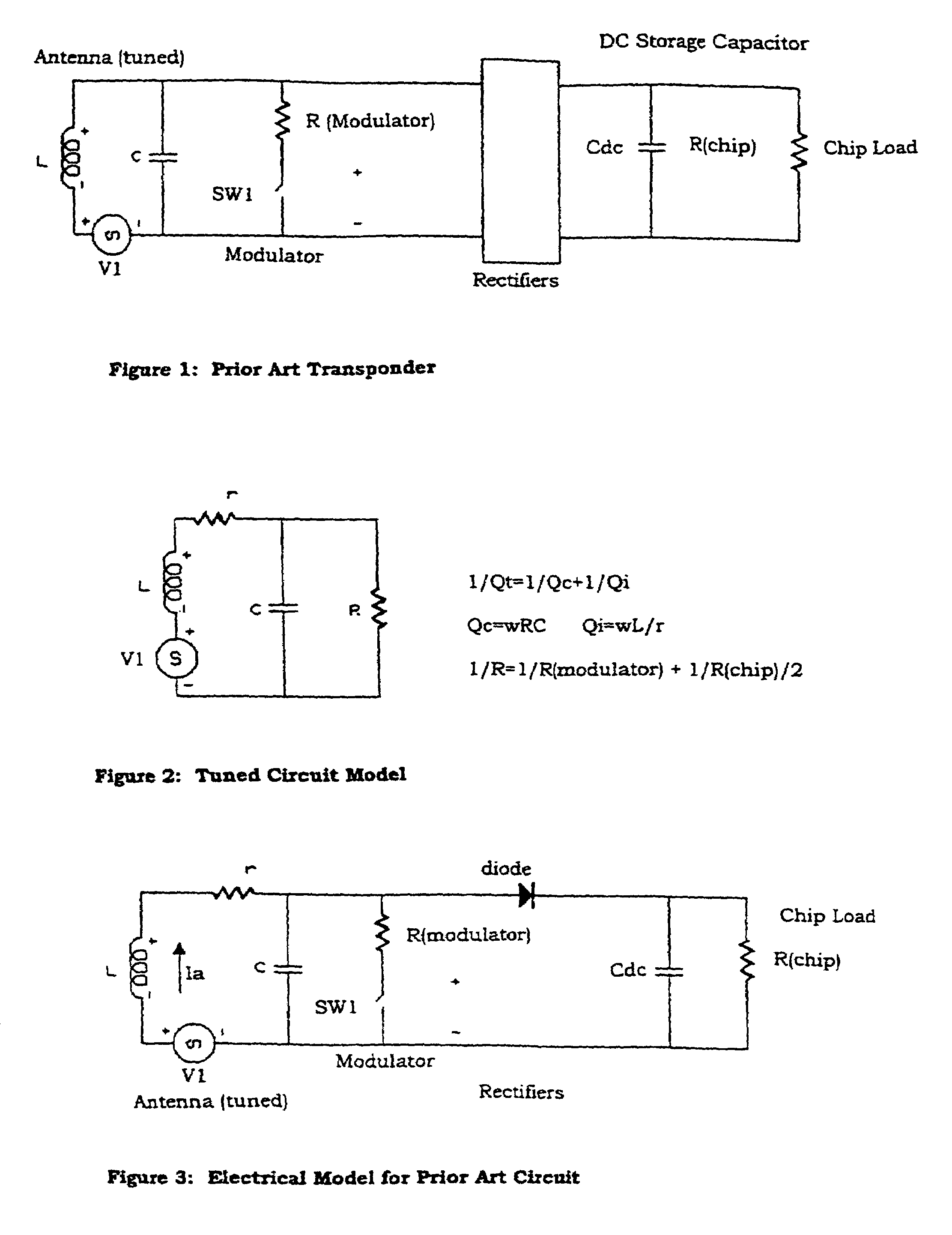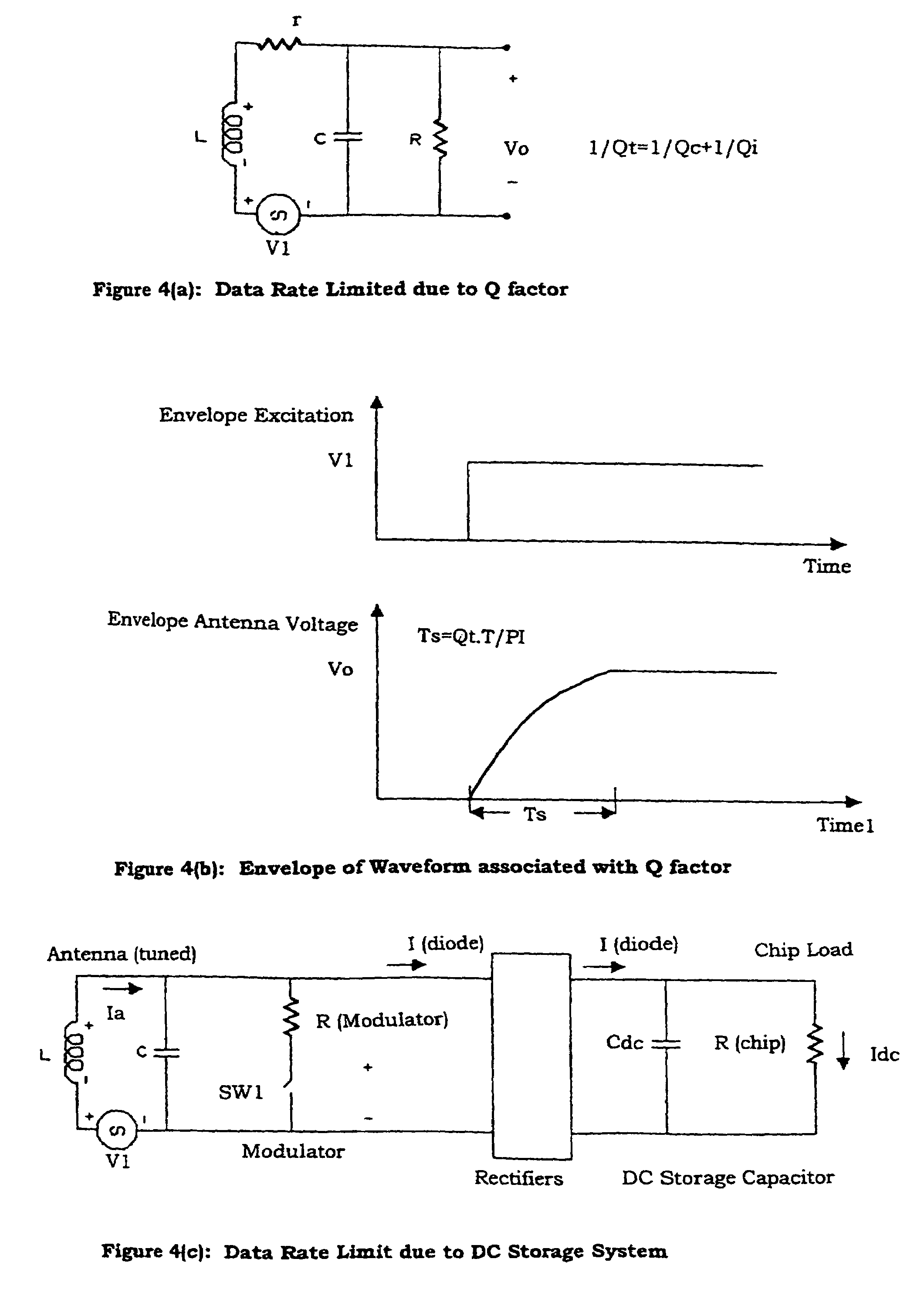Transceiver
a transceiver and receiver technology, applied in the field of transceivers, can solve the problems of increasing the cost and complexity of the transponder, the antenna cannot efficiently broadcast the transmitted signal, and the requirement of low q antennas of low efficiency
- Summary
- Abstract
- Description
- Claims
- Application Information
AI Technical Summary
Benefits of technology
Problems solved by technology
Method used
Image
Examples
Embodiment Construction
[0097]In the following explanation of the invention there is description using both the time and frequency domain methods. It will be appreciated by those skilled in the art that the time domain methods provide information on the transient behaviour of the invention while the frequency domain methods are used to interpret the AC electrical behaviour. It will also be appreciated that the terms “transponder” and “transceiver” are used interchangeably.
[0098]RFID transponders that incorporate a single antenna may be interrogated with an interrogating or exciting field. This field is received by the transponder's antenna and the voltage induced on the antenna may be rectified and used to power the transponder. It is necessary that the transponder be able to transmit messages back to its interrogator. For single antenna transponders the transmitted signal must be radiated off the same antenna that is used to receive the interrogating signal.
[0099]In prior art systems a resistance is provi...
PUM
 Login to View More
Login to View More Abstract
Description
Claims
Application Information
 Login to View More
Login to View More - R&D
- Intellectual Property
- Life Sciences
- Materials
- Tech Scout
- Unparalleled Data Quality
- Higher Quality Content
- 60% Fewer Hallucinations
Browse by: Latest US Patents, China's latest patents, Technical Efficacy Thesaurus, Application Domain, Technology Topic, Popular Technical Reports.
© 2025 PatSnap. All rights reserved.Legal|Privacy policy|Modern Slavery Act Transparency Statement|Sitemap|About US| Contact US: help@patsnap.com



